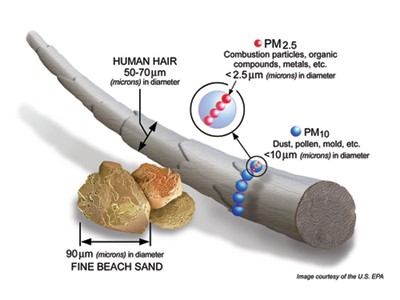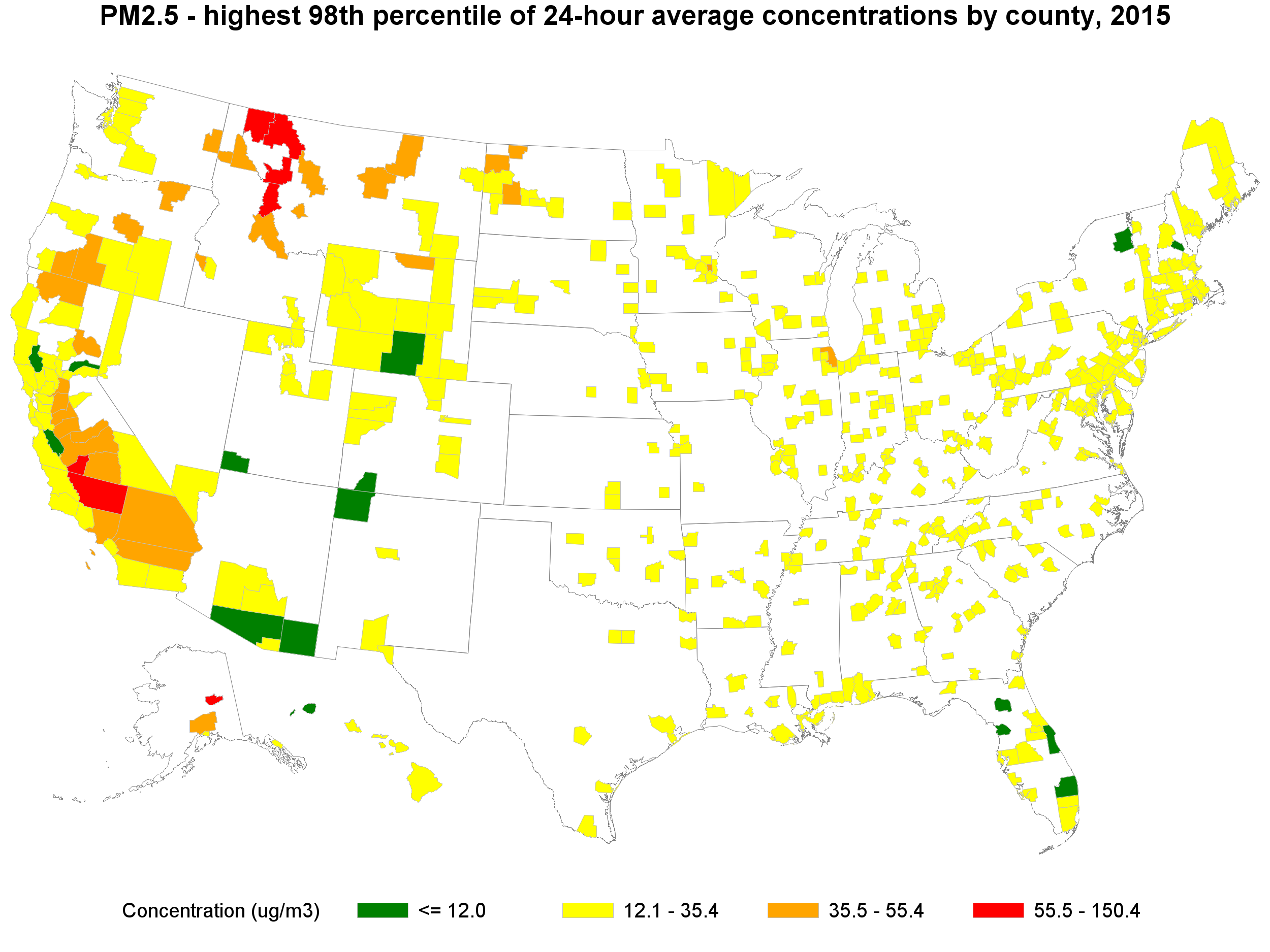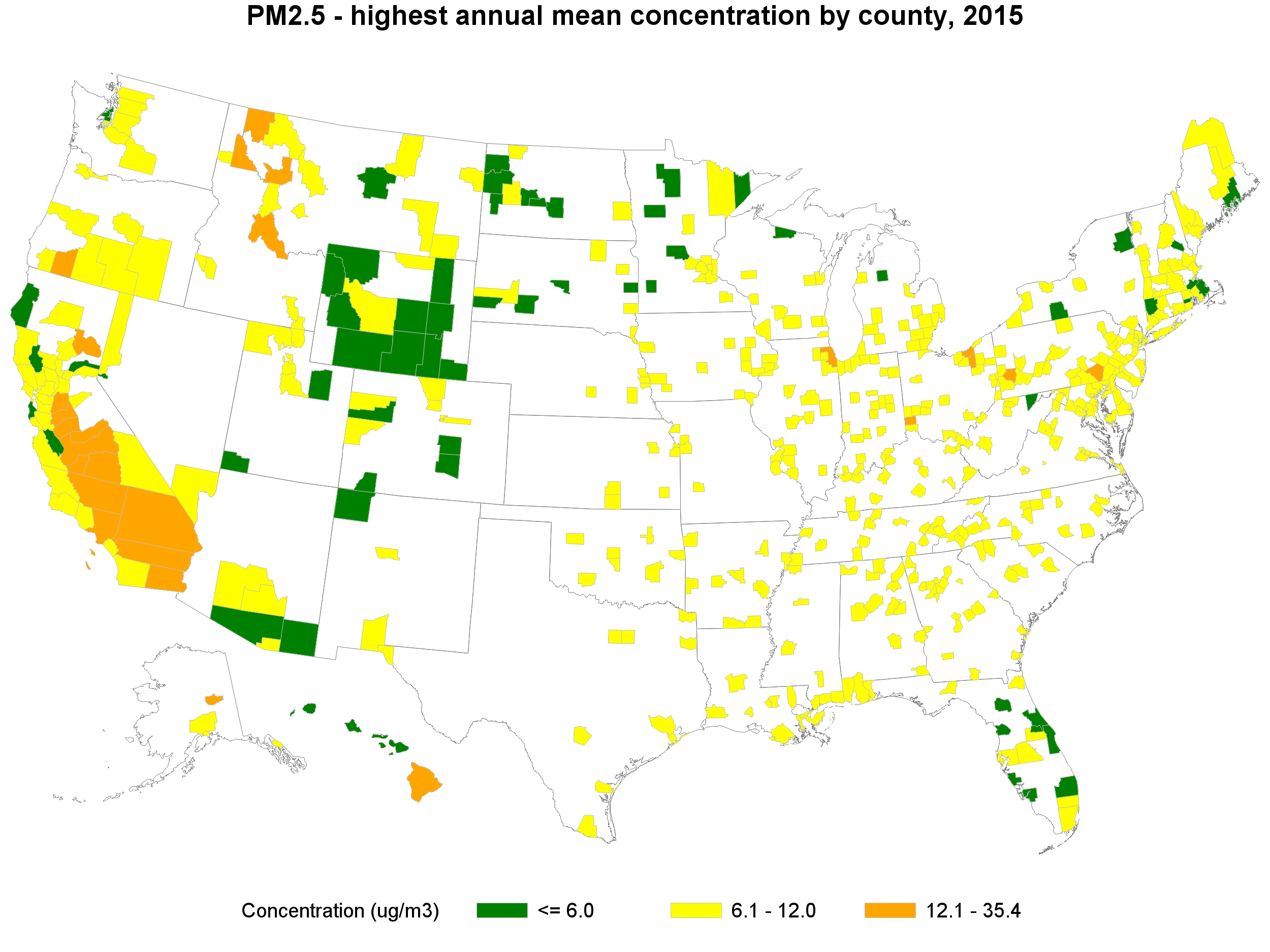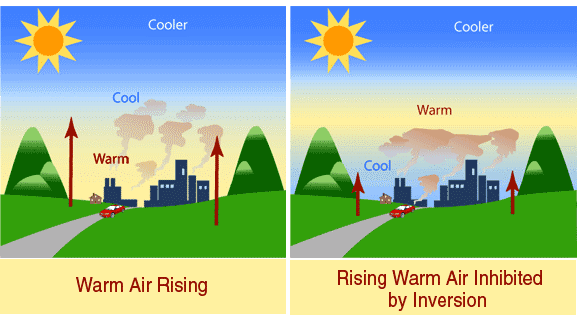Which Of The Following Particle Sizes Is Most Likely To Make Up A Stream's Suspended Load?
On this page:
- What is particle pollution and what types of particles are a health concern?
- Where does particle pollution come from?
- Where and when is particle pollution a problem?
What is particle pollution and what types of particles are a health concern?
Particle pollution, too known equally particulate matter or PM, is a full general term for a mixture of solid and liquid droplets suspended in the air. Particle pollution comes in many sizes and shapes and can be made upward of a number of different components, including acids (such every bit sulfuric acid), inorganic compounds (such every bit ammonium sulfate, ammonium nitrate, and sodium chloride), organic chemicals, soot, metals, soil or dust particles, and biological materials (such as pollen and mold spores).
The air we breathe indoors and outdoors e'er contains particle pollution. Some particles, such as grit, dirt, soot, or fume, are large enough to be seen with the naked eye. Others are so small-scale they tin only be detected using an electron microscope (Figure 1).

Effigy i. How large is particle pollution?
Particles that are 10 micrometers (µm) in diameter or smaller pose the greatest problems. These smaller particles generally pass through the nose and pharynx and enter the lungs. In one case inhaled, these particles can affect the lungs and heart and cause serious health effects in individuals at greatest take a chance, such every bit people with heart or lung affliction, people with diabetes, older adults and children (up to 18 years of age). Larger particles (> 10 µm) are generally of less concern because they usually do not enter the lungs, although they can still irritate the eyes, nose, and throat.
Particles of concern can be grouped into 2 main categories:
- Coarse particles (also known as PM10-2.5):particles with diameters generally larger than 2.5 µm and smaller than, or equal to, ten µm in diameter. Note that the term big fibroid particles in this form refers to particles greater than ten µm in bore.
- Fine particles (also known as PM2.five): particles more often than not ii.5 µm in bore or smaller. This group of particles also encompasses ultrafine and nanoparticles which are mostly classified as having diameters less than 0.i µm.
Note that PM10is a term that encompasses coarse, fine and ultrafine particle fractions.
Fine and coarse particles differ by their sources, limerick, dosimetry (degradation and retentivity in the respiratory system), and wellness furnishings equally observed in scientific studies. Though it is ofttimes hypothesized that specific components or sources may be responsible for particle pollution-related mortality and morbidity, the available prove is not sufficient to permit differentiation of those components or sources that are more closely related to specific health outcomes. Rather, the overall prove indicates that many particle pollution components can be linked with such effects. This course volition mainly focus on the wellness furnishings of fine particles because the scientific evidence of wellness effects is much stronger than for other size fractions.
Where does particle pollution come from?
Some particles, known as primary particles, are emitted directly from a source, such equally construction sites, unpaved roads, smokestacks or fires. Other particles, known every bit secondary particles, course in complicated atmospheric reactions involving chemicals such as sulfur dioxides and nitrogen oxides that are emitted from power plants, industries and automobiles. Secondary particles brand up most of the fine particle pollution in the United States.
Cooking, smoking, dusting, and vacuuming tin can too produce particle pollution, especially in indoor settings. Particles produced by combustion are more likely to be fine particles, while particles of crustal (globe) and biological origin are more likely to be coarse particles.
Where and when is particle pollution a problem?
Particle pollution is institute everywhere - not just in brume, fume, and dust, but also in air that looks clean. Particle pollution can occur yr-circular and presents air quality problems at concentrations found in many major cities throughout the United States.
Some particles can remain in the atmosphere for days to weeks. Consequently, particle pollution generated in one area can travel hundreds or thousands of miles and influence the air quality of regions far from the original source.
Particle pollution levels can be especially high in the post-obit circumstances:
- Near busy roads, in urban areas (especially during rush hour), and in industrial areas.
- When there is fume in the air from wood stoves, fireplaces, campfires, or wildfires.
- When the weather is calm, allowing air pollution to build up. For instance, hot boiling days with brackish air have much higher particle concentrations than days with air partially "scrubbed" by rain or snow.
Considering of their small size, fine particles outdoors can penetrate into homes and buildings. Therefore, high outdoor particle pollution levels can elevate indoor particle pollution concentrations.
Based on 2015 data, Effigy ii and 3 show how likely it may be for a particular area to experience air quality advisories for fine particle pollution based on short-term (Effigy 2) and annual (Effigy iii) averaging.


Fine particle pollution ofttimes has a seasonal pattern. Fine particle concentrations in the eastern half of the U.s.a. are typically higher from July through September, when sulfates are more readily formed from sulfur dioxide (Then2) emissions from power plants in that region and contribute to the formation of fine particles.
Fine particle concentrations tend to exist higher from October through December in many areas of the West, in function because fine particle nitrates are more readily formed in libation weather and due to woods stove and fireplace utilize.
In some locations, such as mountainous areas where wood is burned for heat, particle pollution levels can be particularly loftier during wintertime inversions (Figure four). An inversion traps the smoke close to the ground, allowing particle pollution levels to increment before the inversion lifts.

This state of affairs is exacerbated by complex terrain. Inversions are more likely to occur in valleys where pollution is trapped both vertically (past the warmer air in a higher place) and horizontally (by the valley walls).
To find out more about particle pollution patterns in your area, visit EPA'southward AirData website.
PREVIOUS |NEXT
Which Of The Following Particle Sizes Is Most Likely To Make Up A Stream's Suspended Load?,
Source: https://www.epa.gov/pmcourse/what-particle-pollution
Posted by: nielsonhattacte.blogspot.com



0 Response to "Which Of The Following Particle Sizes Is Most Likely To Make Up A Stream's Suspended Load?"
Post a Comment